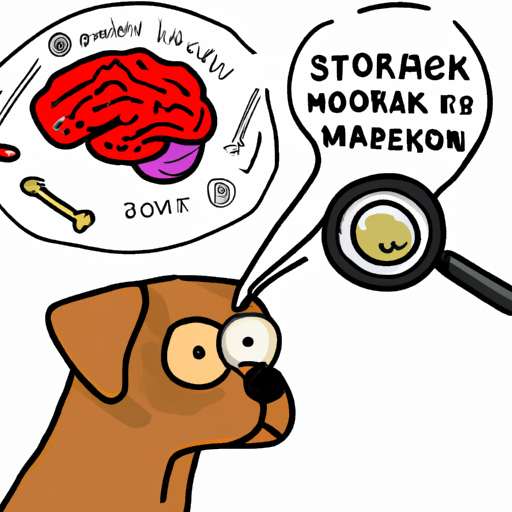As a caregiver, understanding the causes of strokes in dogs is vital. It’s essential to know the signs, risks, and preventive measures you can take to ensure your furry friend’s health. This article will explore these aspects in detail.
Understanding Strokes in Dogs
Strokes in dogs are not as common as in humans, but they do occur and can be quite serious. This condition occurs when blood flow to the brain is interrupted, resulting in oxygen deprivation and neuronal damage.
What are the Types of Strokes?
There are mainly two types of strokes:
- Ischemic strokes: caused by a blockage in the blood vessels, restricting the blood flow to the brain.
- Hemorrhagic strokes: caused by bleeding in the brain due to a ruptured blood vessel.
Common Causes of Strokes in Dogs
Strokes in dogs can be caused by a variety of factors, but the most common are:
- Diseases affecting blood clotting: Conditions like thrombocytopenia and hemophilia can lead to an increased risk of strokes.
- Heart disease: Diseases such as endocarditis and heartworm can lead to clots that cause strokes.
- Kidney disease: Chronic kidney disease can increase blood pressure, a risk factor for strokes.
- Brain trauma: Severe injuries to the brain can cause bleeding or blockages that can result in a stroke.
- Old age and obesity: Older and overweight dogs are at a higher risk for strokes.
Symptoms of Strokes in Dogs
Dog owners should be alert for the following symptoms which may indicate a stroke:
- Sudden loss of balance
- Head tilt
- Loss of vision
- Inability to walk
- Abnormal eye movements
If your dog shows any of these signs, seek immediate veterinary attention.
Preventing Strokes in Dogs
Preventing strokes in dogs involves maintaining a healthy lifestyle and routine vet check-ups. Some preventive measures include:
- Regular exercise: Helps maintain a healthy weight and good cardiovascular health.
- Balanced diet: A diet low in fat and cholesterol can help decrease the risk of strokes.
- Regular vet visits: Regular check-ups can help identify potential health issues early on.
Frequently Asked Questions
Q: Can dogs recover from a stroke?
A: Yes, with proper treatment and care, most dogs can recover from a stroke.
Q: How is a stroke diagnosed in dogs?
A: Vets typically use a combination of physical examination, history, and advanced imaging like MRI or CT scan to diagnose a stroke.
Q: How is a stroke treated in dogs?
A: Treatment mainly involves managing the underlying cause and supportive care to help the dog recover.
Q: Can a stroke in dogs be prevented?
A: While not all strokes can be prevented, maintaining a healthy lifestyle for your dog can significantly reduce the risk.
Remember, as a caregiver, your pet’s health largely depends on you. Understanding the signs and causes of strokes in dogs can help you take timely action and potentially save your pet’s life.



